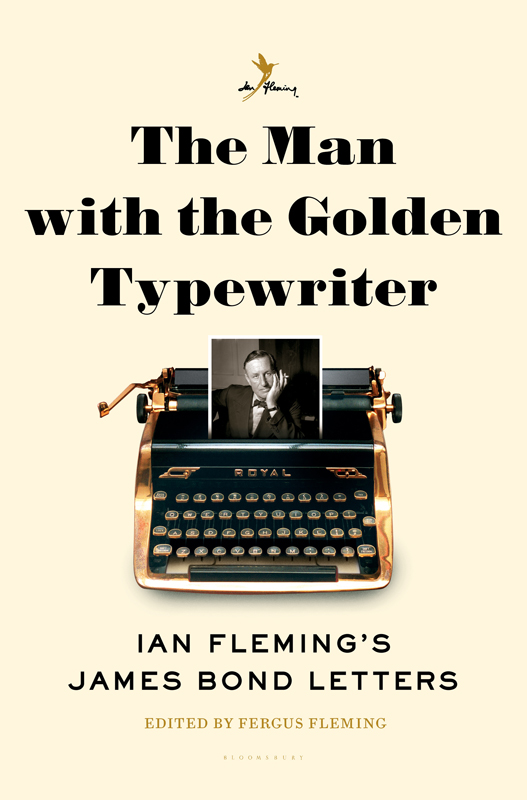
The Man with the Golden Typewriter
Ian Fleming's James Bond Letters
کتاب های مرتبط
- اطلاعات
- نقد و بررسی
- دیدگاه کاربران
نقد و بررسی

December 1, 2015
Compiled and edited by Fleming's nephew, this book is for Bond lovers, and heaven knows, there are a lot of them. After Casino Royale was accepted for publication in 1952, Fleming bought himself a gold-plated typewriter to remind himself he was now a published author. Over the remaining 12 years of his life, the novelist produced 13 more Bond books, the children's story Chitty Chitty Bang Bang, and two titles of nonfiction. Fleming took writing seriously, even choosing the cover art, suggesting how big a publishing run a novel should have, and how the book should be promoted. Here the most intriguing exchanges are those in which correspondents point out errors in Fleming's novels. In one instance, the author writes back and forth with a Scot who advises him on his choice of guns, bullets, silencers (don't use them), and holsters. In another, a Yale librarian takes Fleming to task for mangling American slang: he particularly objects to Fleming's use of the phrase "by gum." VERDICT Fleming was no great letter writer, but he was industrious and chatty (especially with friends Noel Coward and W. Somerset Maugham). As a result, this delightful anthology contains a great deal of helpful information for Bond aficionados.--David Keymer, Modesto, CA
Copyright 2015 Library Journal, LLC Used with permission.

November 2, 2015
It's hard to believe that it took this long for someone to publish Ian Fleming's correspondence about James Bond. His nephew, Fergus Fleming, provides generous contextual commentary on the fascinating missives. Readers will enjoy watching Fleming interact with his editors, fans, and famous friends such as David Niven, W. Somerset Maugham, and Noel Coward. Each Bond novel gets its own chapter, and there are separate chapters devoted to Fleming's exchanges with mystery author Raymond Chandler, arms expert Geoffrey Boothroyd (the real Q), and Yale librarian Herman W. Liebert (who critiqued his use of American slang). It is especially interesting to note how gentlemanly Fleming was when responding to criticism. The letters also show the prickly Fleming, who argued about print runs, royalty rates, and co-op advertising with his publisher, Jonathan Cape, and the opinionated Fleming, who had his own ideas about cover design. His desired legacy was a classic thriller that would be a "mixture of Tolstoy, Simenon, Ambler, and Koestler, with a pinch of ground Fleming." Too bad he had to settle for being the creator of one of the most famous fictional characters of all time.

October 15, 2015
A collection of letters from the creator of Bond, James Bond. In 1952, former intelligence officer, bibliomaniac, and drinking enthusiast Ian Fleming (1908-1964) acquired what he called a "golden typewriter" (which, he added, cost $174, a small fortune back then) and set out, in a period of doldrums while living in Jamaica, to write a book. On it, he banged out the first Bond novel, Casino Royale, along with a stream of letters that touched on various aspects of the thriller--not just its gestation as a manuscript, but also large details of royalty payments (to his publisher, Jonathan Cape: "If you are feeling in a more generous mood today, for symmetry's sake you might care to include 12 1/2 percent on the 5,000 to 10,000 [copies sold], but I will not be exigent," occasioning a decisive marginal "No" from the recipient). Fleming even wrote fine-tuning instructions on the cover art. As this collection of letters progresses, we see a friendly but jousting relationship developing between Fleming and his editor, William Plomer, who laments the death of Oddjob in Goldfinger ("what an exit!"), questions some of Fleming's more outlandish plot twists, and, as an editor should, suggests better wordings and better titles (Fleming originally wanted to call Dr. No "The Wound Man"). In his letters, we also see the steady dissolution of a marriage and other effects of fame and fortune. The volume includes a few letters from outraged readers who, in those innocent days, objected to Fleming's "ghastly filth." Overall, the letters emphasize, as the volume editor observes, that Ian Fleming passed on numerous of his private passions to his creation, including scuba diving, fast cars, golf, and cards, "along with women, tobacco, Martinis, and scrambled eggs." In that regard, the relationship of art to Fleming's real life is fascinating. Essential for fans of the James Bond books. And who isn't a fan?
COPYRIGHT(2015) Kirkus Reviews, ALL RIGHTS RESERVED.

























دیدگاه کاربران